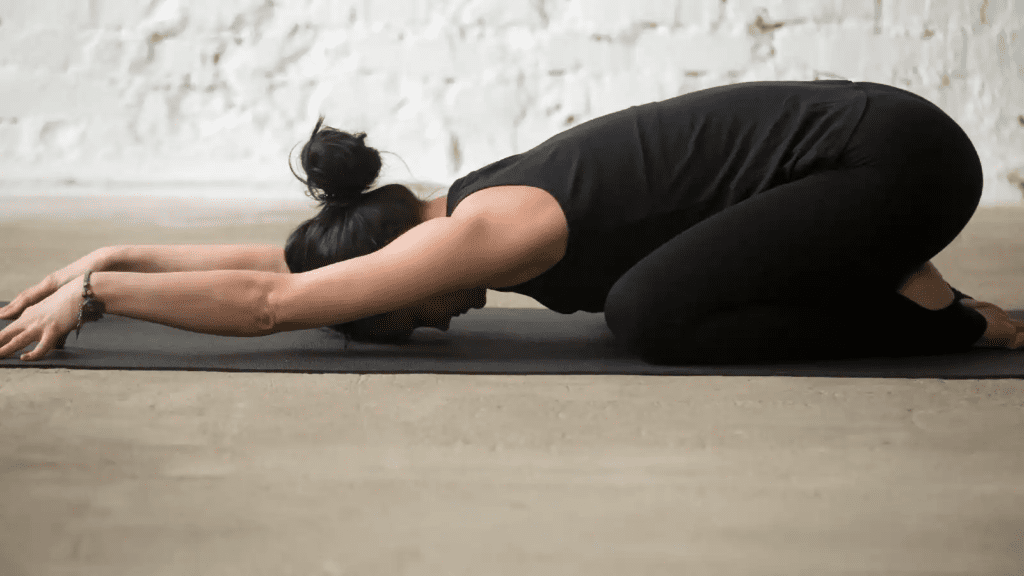Somatic yoga is a mild and aware technique to yoga that emphasizes inner physical perception and revels in it. This practice combines the historical wisdom of conventional yoga with contemporary somatic practices, focusing on the body’s inner sensations and moves. Its goals are to improve awareness, launch tension, and enhance usual well-being. Whether you’re a pro yogi or a beginner, somatic yoga gives profound advantages which can remodel your existence.
What is Somatic Yoga?
Somatic yoga is an exercise that integrates somatics, that is the observation of the body as perceived from within, with conventional yoga postures and moves. Unlike traditional yoga, which often emphasizes attaining particular poses, somatic yoga prioritizes the inner enjoyment of motion and sensation. This mindful technique helps practitioners increase a deeper connection with their bodies and promotes healing and rest.

Step-by way of-Step Guide to Practicing Somatic Yoga
- Start with Breathing Exercises: Begin with clean respiratory physical activities to middle your thoughts and body. Focus on deep, gradual breaths, feeling the upward push and fall of your chest and stomach.
- Gentle Warm-Up Movements: Perform mild moves to warm up your body. These can encompass neck rolls, shoulder shrugs, and moderate twists. Pay attention to how your frame feels with each movement.
- Mindful Postures: Move into conventional yoga postures with somatic recognition. For instance, in a forward bend, as opposed to striving to touch your feet, focus on the sensations to your hamstrings and reduce back.
- Somatic Movements: Incorporate somatic actions inclusive of slow, aware stretching and micro-actions. These actions assist release of anxiety and the growth of body cognizance.
- Body Scanning: Practice body scanning by lying down and mentally scanning your frame from head to toe. Notice areas of hysteria or soreness and breathe into them.
- Relaxation and Meditation: End your exercise with a relaxation pose (Savasana) and a short meditation. Focus on your breath and the sensations on your frame, permitting yourself to absolutely loosen up.
Curious about more yoga poses? Check out our detailed guide on “Goat Yoga” for another enriching addition to your practice!
Benefits of Somatic Yoga
- Increased Body Awareness: Somatic yoga enables you to become extra attuned to your frame, improving your ability to enjoy and respond to its wishes.
- Stress Reduction: The aware nature of somatic yoga promotes relaxation and reduces stress.
- Improved Flexibility and Mobility: Gentle actions and stretches beautify flexibility and joint mobility.
- Pain Relief: Somatic yoga can alleviate persistent pain by using a way of addressing underlying tension and improving body mechanics.

- Emotional Healing: The practice encourages emotional release and recuperation by connecting bodily sensations with feelings.
Tips for a Successful Somatic Yoga Practice
- Create a Calm Environment: Practice in a quiet, snug space in which you can focus without distractions.
- Set an Intention: Begin every exercise with a clear goal, inclusive of relaxation, recovery, or self-attention.
- Be Consistent: Regular practice is prime to experiencing the blessings of somatic yoga.
- Stay Present: Focus on the present second and your inner experience, letting cross of external distractions and judgments.
Curious about more yoga poses? Check out our detailed guide on “Asana Yoga” for another enriching addition to your practice!
Safety Tips for Practicing Somatic Yoga
- Listen to Your Body: Always listen to your body and appreciate its limits. If something doesn’t feel right, alter the motion or stop.
- Warm-Up Properly: Ensure you heat your body earlier than diving into more extreme moves.
- Stay Hydrated: Drink water before and after your exercise to stay hydrated.
- Use Props: Utilize yoga props like blocks, straps, and bolsters to assist your practice and prevent stress.
Common Mistakes in Somatic Yoga
- Forcing Movements: Somatic yoga is about mild, conscious actions. Avoid pushing your body into uncomfortable positions.
- Ignoring Sensations: Pay close interest in your body’s indicators. Ignoring discomfort can cause harm.
- Rushing Through the Practice: Take your time with each motion and posture. Somatic yoga is set to experience every moment.
- Holding Your Breath: Remember to respire deeply and obviously during your exercise.
Modifications for Beginners
- Start Slow: Begin with fundamental postures and movements, steadily growing depth as you turn out to be extra snug.
- Use Props: Props let you attain the right alignment and make poses extra handy.
- Focus on Breath: Prioritize respiration sporting events and frame scanning to construct a robust basis.
- Seek Guidance: Consider joining a somatic yoga class or operating with a certified teacher to make sure you’re training correctly.
Curious about more yoga poses? Check out our detailed guide on “Chair Yoga Poses” for another enriching addition to your practice!
Advanced Somatic Yoga Techniques
- Feldenkrais Method: This approach makes a specialty of improving movement patterns via mild sporting activities and elevated body consciousness.
- Hanna Somatics: Developed with the aid of Thomas Hanna, this approach uses sluggish, aware moves to release muscle anxiety and enhance neuromuscular control.
- Body-Mind Centering: This approach explores the relationship between the thoughts and body via movement and contact.
The Science Behind Somatic Yoga
Somatic yoga combines ideas from numerous fields, along with neuroscience, psychology, and conventional yoga. Research suggests that conscious motion practices like somatic yoga can enhance mind characteristics, reduce stress, and beautify emotional well-being. By focusing on the frame’s inner sensations, somatic yoga facilitates create new neural pathways, promoting recovery and transformation.
How Somatic Yoga Differs from Traditional Yoga
- Focus on Internal Experience: Somatic yoga emphasizes the internal experience of movement, whilst conventional yoga regularly focuses on accomplishing unique postures.
- Gentle Movements: Somatic yoga uses mild, mindful movements, making it available to people of all ages and health ranges.
- Healing and Relaxation: The number one intention of somatic yoga is recuperation and relaxation, rather than physical fitness or flexibility.
Curious about more yoga poses? Check out our detailed guide on “Cat Cow Yoga Pose” for another enriching addition to your practice!
Incorporating Somatic Yoga into Daily Life
- Morning Routine: Start your day with a brief somatic yoga practice to evoke your frame and mind.
- Work Breaks: Use somatic moves to alleviate anxiety and stress during work breaks.
- Evening Relaxation: End your day with a chilled somatic yoga consultation to sell restful sleep.
Conclusion
Somatic yoga is a transformative practice that offers several benefits for the thoughts and body. By specializing in internal sensations and conscious moves, you may enhance your frame cognizance, lessen strain, and promote recovery. Whether you’re an amateur or a skilled yogi, somatic yoga affords a gentle and effective manner to hook up with your frame and improve your typical well-being.
- Key Points in Conclusion
- Increased body attention and rest
- Stress discount and emotional recovery
- Improved flexibility and mobility
- Alleviation of chronic aches
- Accessible to all ages and fitness degrees
Curious about more yoga poses? Check out our detailed guide on “Cobra Yoga Pose” for another enriching addition to your practice!
Embrace the gentle energy of somatic yoga and experience the profound blessings it can deliver in your life.